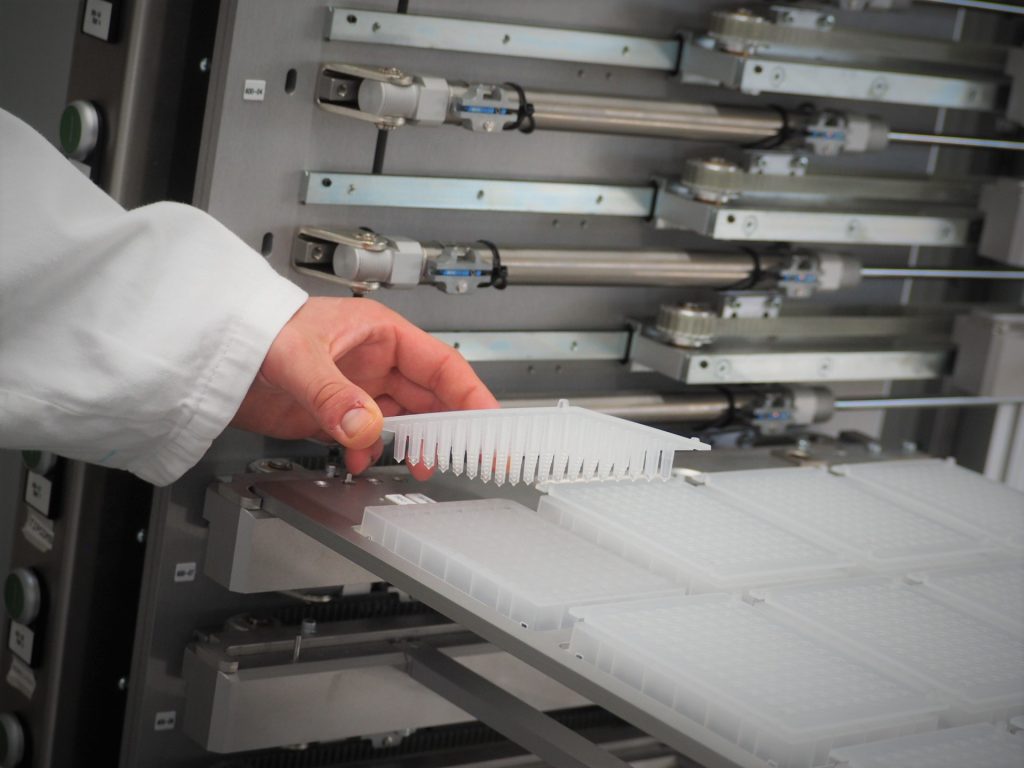
News
Crop Protection
Research
Specialized robot helps potato breeding company develop resistant varieties faster
The specialized robot can isolate potato DNA faster, speeding up the breeding process for disease-resistant potato varieties.
May 20, 2020 By Potatoes in Canada
 The specialized robot is set up to help provide insights into plant DNA. Within 15 minutes, the robot can isolate the DNA of 1,536 potato plants. Photo courtesy of HZPC.
The specialized robot is set up to help provide insights into plant DNA. Within 15 minutes, the robot can isolate the DNA of 1,536 potato plants. Photo courtesy of HZPC. HZPC, a potato breeding company based in the Netherlands, is using a specialized robot to help breed disease-resistant potato varieties faster.
The company aims to ensure that 75 per cent of its new potato varieties are resistant to Phytophthora and the Y-virus by 2030. In this variety development process, HZPC states that DNA-marker technology is vital.
DNA-marker technology involves extracting DNA from a potato plant leaf in order to evaluate all its characteristics. One plant cell contains around 40,000 genes and characteristics. “The more information we know about this molecular information, the more successful the breeding processes will be,” HZPC explains.
“The more information we know about this molecular information, the more successful the breeding processes will be,” HZPC explains.
The specialized robot is set up to help provide insights into plant DNA. Within 15 minutes, the robot can isolate the DNA of 1,536 potato plants. The robot is currently being used in HZPC’s research and development laboratory in Metslawier.
Within 15 minutes, the robot can isolate the DNA of 1,536 potato plants.
HZPC built the robot in order to gain molecular information quicker. The company explains how breeding involves highly accurate, precision processes. Positive qualities, for example, are crossed with a variety that has resistance to multiple diseases. Then, the DNA from the descendants is examined to see whether or more robust variety has been created.
“The use of the robot and marker technology has allowed HZPC to accelerate the process considerably,” HZPC said in its announcement. “As precision and growing volumes are significantly increased, the chance of finding improved new varieties is also increased.”
HZPC as a company had potato varieties with resistance to G. pallida (potato cyst nematode) for the past few decades. Now, the company is starting to introduce varieties with a high level of resistance against Phytophthora virus (late blight) and wart disease (potato cyst nematode diseases). In addition to these resistance varieties, the specialized robot will help the company reach its goal to ensure that 75 per cent of its new potato varieties are resistant to Phytophthora and the Y-virus by 2030.
Print this page